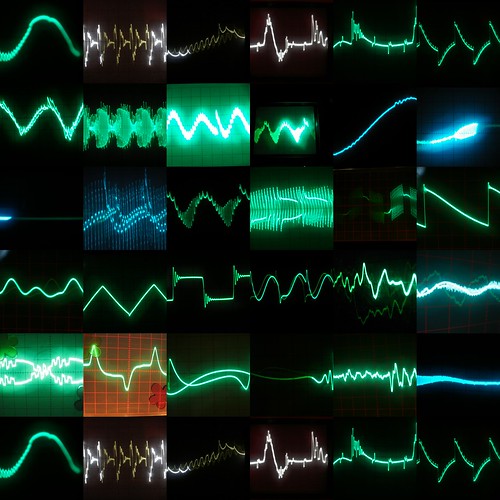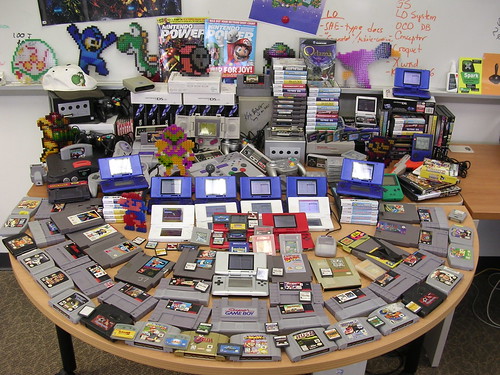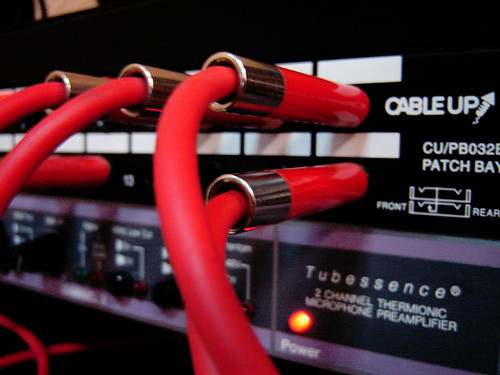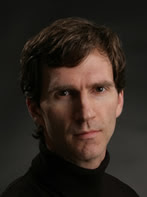Posted today on Create Digital Music by W. Brent Latta:

Composer, musician, and sound designer W. Brent Latta knows something about sound design, currently working professionally on sound for games with Amaze Entertainment. As an enthusiast of what it takes to craft sound, he’s put together a list for us of where to go to learn more and hone your abilities, from fundamentals to the specifics required by film/video and games. -Ed.
Sound design is a fundamental aspect of nearly every form of digital media, from music production to games to commercial radio. Sometimes seen as a ‘dark art’, sound design can also be viewed as difficult and mysterious, often deterring would-be creators. Here are 15 sound design resources to help rookies and veterans alike.
Fundamentals
The fundamentals of sound design rest firmly on the core fundamentals of audio engineering. Without a working knowledge of basic audio engineering, your road to becoming a sound designer could be a long one. Here are some resources to help get you off on the right foot.
1. AudioTuts.com is a great place to start learning basic and advanced techniques for audio production. Even if you have no interest in producing music, taking the time to work through both sound design and music production tutorials will quickly give you practical, hands-on experience with the techniques you’ll need to get your sound design career moving.
2. Sound On Sound has a voluminous archive of audio, music and production tutorials. These range from the most fundamental techniques of sound synthesis, all the way up to specific techniques using outboard effects processors.
3. Digital Pro Sound has a nice archive of tutorials and articles covering a range of applications, plug-ins, and general techniques.
Sound For Film

Sound for film has a long and proud history, with a level of camaraderie and support that is not often found in other aspects of various media industries. As sound designers, we are fortunate to have a plethora of amazing individuals who help promote our work, keep us informed, and help us keep up on the latest and greatest news and tech. Here are a few film-specific sites that are worth checking out.
4. FilmSound is perhaps the most comprehensive site on the web regarding the topic of sound and music for film. Contributors include legendary sound designers such as Randy Thom, Ben Burtt and Walter Murch. There’s even a section specifically for beginners!
5. FilmSoundDaily is relatively new to the blogosphere, but is highly recommended for unique, personal approach, its thorough interviews, and plenty of audio and video content.
6. SyncSoundCinema is an interesting blog covering field production and recording. Product reviews and announcements, as well as industry commentary make for a useful daily read.
Sound For Games

The New Media Team’s video game collection, also known as Things Gamers See In Their Dreams. Photo by
wisekrisNow that we’re moving into my neck of the woods, I’m happy to share with you some of my favorite sites covering the topics of audio for games. While many of the techniques are the same, the specific application of sound in games can vary widely from film, television and radio. Here are a few sites to give you a head-start on audio for games.
7. GamaSutra is one of the premier sites on the web for news, articles, interviews, and industry reports on games. Their archives are replete with interesting game audio articles covering a range of topics including adaptive music, voiceover recording, production pipelines and development methodology. In addition, Gamasutra has sections devoted to job-hunting and education, for those who are just getting started.
8. GANG is the Game Audio Network Guild, is the largest game audio community in the world. It is a non-profit organization devoted to the promotion, education and growth of the game audio community. The majority of the resources are available to members-only, but with the recent site overhaul, there are a number of new features that are available for those who are interested in joining but want more information first.
9. Music4Games is devoted to all aspects of music for video games, including soundtrack reviews, interviews with top composers, and even reviews of software used frequently in the production of game music. This is a great site for learning about the movers and shakers of the game music industry.
10. IASIG “exists to allow developers of audio software, hardware, and content to freely exchange ideas about improving the performance of interactive applications by influencing hardware, software, and tool design.” Comprised of a wide variety of individuals from across the interactive entertainment industry, the IASIG has working to improve the lives of game developers and game audio designers for over 13 years.
11. sound-music-interactive-games is a blog I recently stumbled upon. While much of the content is linked from other, previously mentioned sites, it is all focused on game-audio, and contains thoughtful and amusic commentary from Richard Stevens.
Communities and Lists

I’m happy to say that the sound design community is generally welcoming, informative, and a fun place to work and play. Here are some great places where you can begin to network with fellow composers and sound designers. As a general rule, newbies are welcome in all of these communities, though the signal-to-noise ratio here is very high. Posts are almost always ‘on-topic’, and searching the archives for previously answered questions is mandatory.
12. GameAudioForum is an excellent place to learn, share ideas, and network with other game audio professionals.
13. GameAudioPro is a Yahoo! mailing list devoted to learning more about sound design for games. While there isn’t a much traffic here as on GameAudioForum, this is a great way to stay connected if you don’t want to spend a lot of time searching through web forums.
14. sound_design is another Yahoo! discussion group. This particular group is a veritable who’s-who of the film, television and game sound world. The level of professionalism here is extremely high, and while rookies are welcome, asking rookie questions is somewhat frowned upon, as most rookie questions are readily answered elsewhere (in the archives or on other websites). I’ve been a ‘lurker’ on this site for two years and have yet to ask a question. Even so, I’ve learned a great deal by simply reading the posts of others.
A Random Must Read Site

15. USO is a site with a wide ranging scope covering topics such as sound design, production, technique, interviews and digital signal processing. This is one of my favorite daily visits, with a great sense of humor, and reverence for audio creators everywhere. Highly recommended!




































